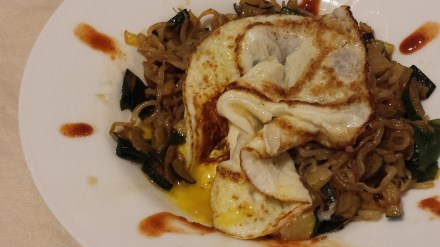Oooooh man… If you ever get your hands on some really good fresh tuna, don’t be afraid – eat it raw! Sushi, Sashimi, Poke – three delicious ways to eat raw fish. Dan and I made our own awesome version of Hawaiian Poke – super easy and no cooking (wink wink) involved.
If you get fresh tuna and absolutely have to cook it, please try to keep it on the rare/medium rare side of done. Overcooked tuna is a sad thing.
However, if you think you’re up for it – go the raw route! Poke can be served with rice, salad, cucumbers, sprouts, or anything else you come up with. We ate ours with additional dipping sauces (soy sauce, vinegar, sesame oil/hot sauce), pickled ginger, bean sprouts, and wasabi paste. (We, of course, used Black Market Hot Sauce for this recipe – Chili Garlic Lime to be precise.)
There are so many different recipes for poke – look at a few and come up with your own combination!
This recipe would be a S if you follow the Trim Healthy Mama plan.
Hawaiian Yellowfin Poke
- 1 lb sashimi grade tuna
- 2-4 green onions – thinly sliced
- 1/3 bunch cilantro – chopped
- 1/8-1/4 c toasted sesame oil (sesame oil can be over powering so start with the smaller amount and ad more if desired)
- 1/4 c dark soy sauce
- 1/4 c apple cider vinegar
- 1 T grated fresh ginger
- 2-3 T hot sauce
- 2 T sesame seeds
Instructions
- With a sharp knife, dice tuna into 1/4 inch cubes.
- In a medium bowl, whisk together sesame oil, soy sauce, vinegar, ginger, and hot sauce. Taste and adjust flavors to your preference.
- Add tuna and remaining ingredients to marinade.
- Cover and let marinade in refrigerator until ready to serve. (Can also be eaten immediately.)
Enjoy!








